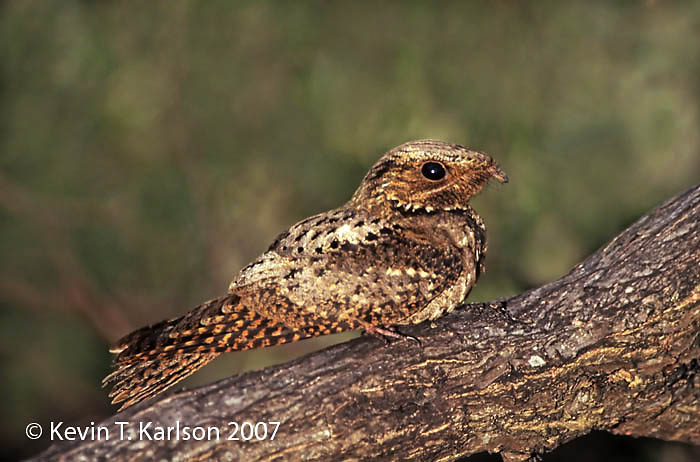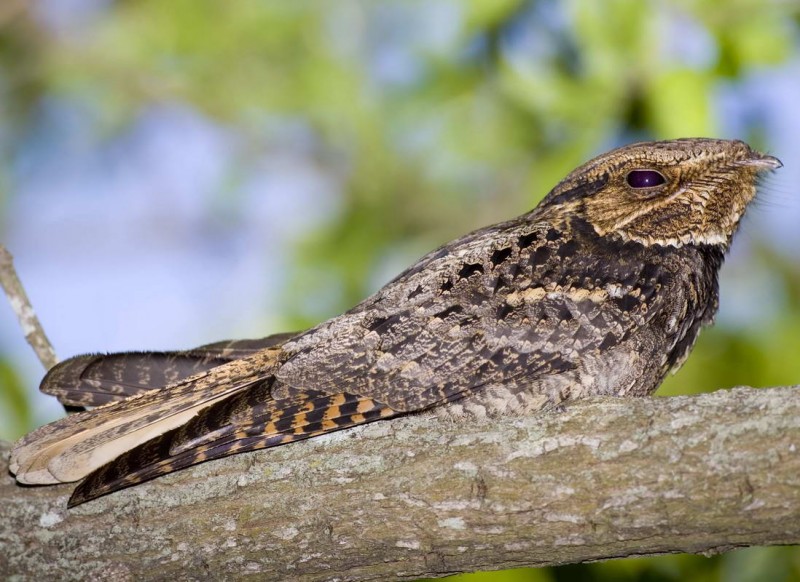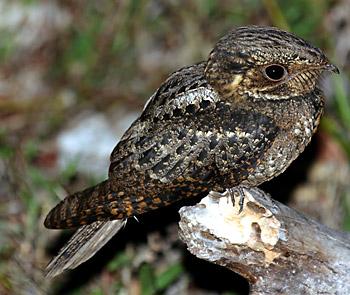
Caprimulgus carolinensis
SUBFAMILY
Caprimulginae
TAXONOMY
Caprimulgus carolinensis Gmelin, 1789, South Carolina. Monotypic.
OTHER COMMON NAMES
English: Carolina chuck-will, chuck; French: Engoulevent de
Caroline; German: Carolinanachtschwalbe; Spanish: Chotacabras
de la Carolina.
PHYSICAL CHARACTERISTICS
11–23 in (28–33 cm); 3.3–5.2 (94–147 g). Brown, blackish brown,
buffish white, and white cryptic coloration. Sexually dimorphic.
DISTRIBUTION
Breeds in eastern and southeastern USA; winters from Florida
and West Indies through Central America to Colombia and
northern Venezuela.
HABITAT
Woodland and forests. Often sits and calls at night from gravel
roads.
BEHAVIOR
Roosts during day; active mainly at dusk and before dawn.
Song “chuck willow willah” is basis of English name, the initial
“chuck” is often inaudible.
FEEDING ECOLOGY AND DIET
Feeds mainly on insects caught on sallying flights from ground
or perch. Occasionally recorded feeding on small birds.
REPRODUCTIVE BIOLOGY
Unlined nest on ground with clutch of two eggs that are cream
with dark blotches and spots. Incubation by female for period
of around 20 days. Small young are golden-brown, paler beneath.
Young can fly when 16–17 days old.
CONSERVATION STATUS
Not threatened.
SIGNIFICANCE TO HUMANS
Rarely noticed by humans, except for its distinctive nocturnal
song.
Photo Gallery of - Chuck-will’s-widow




 Animalia Life
Animalia Life